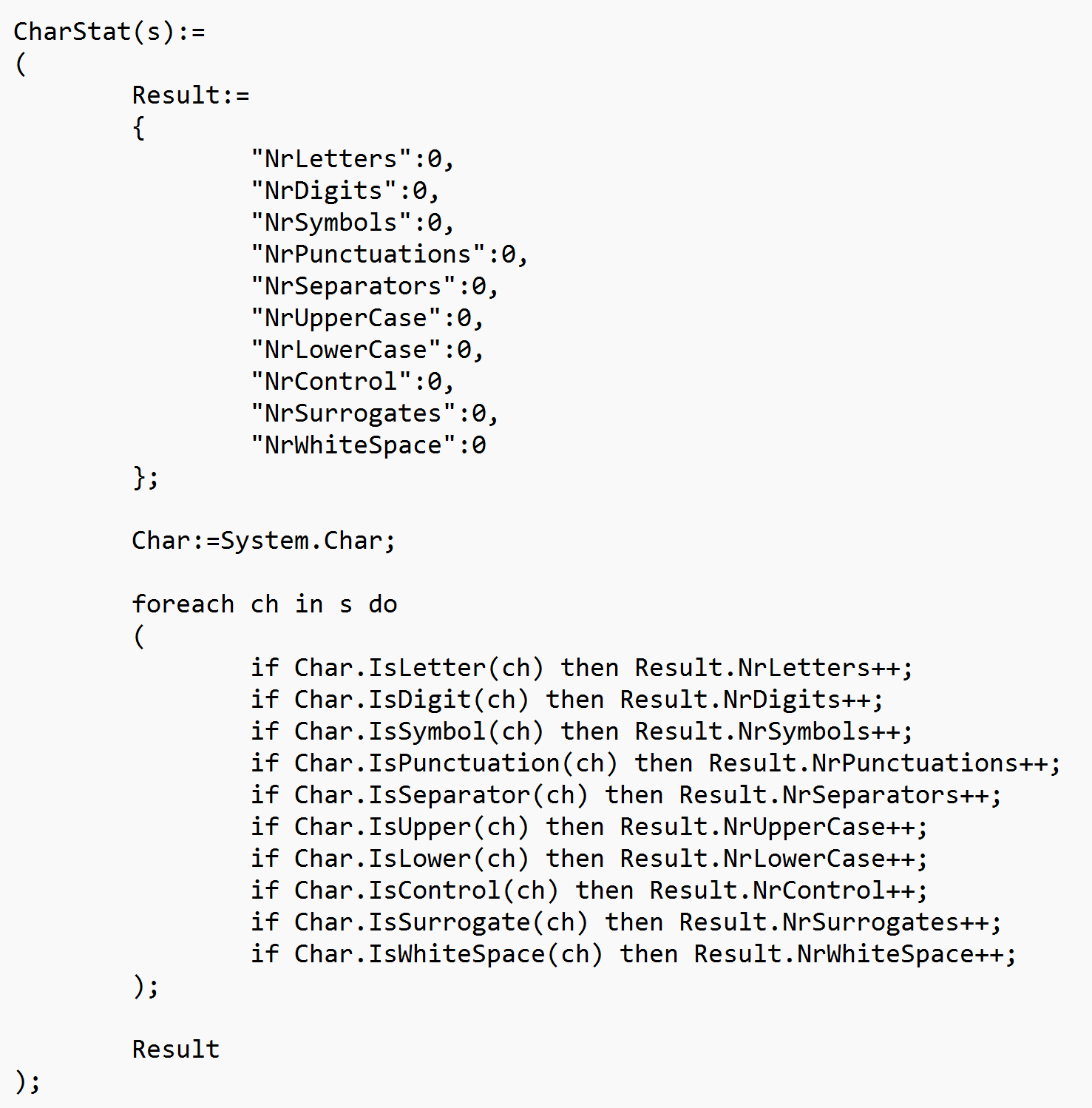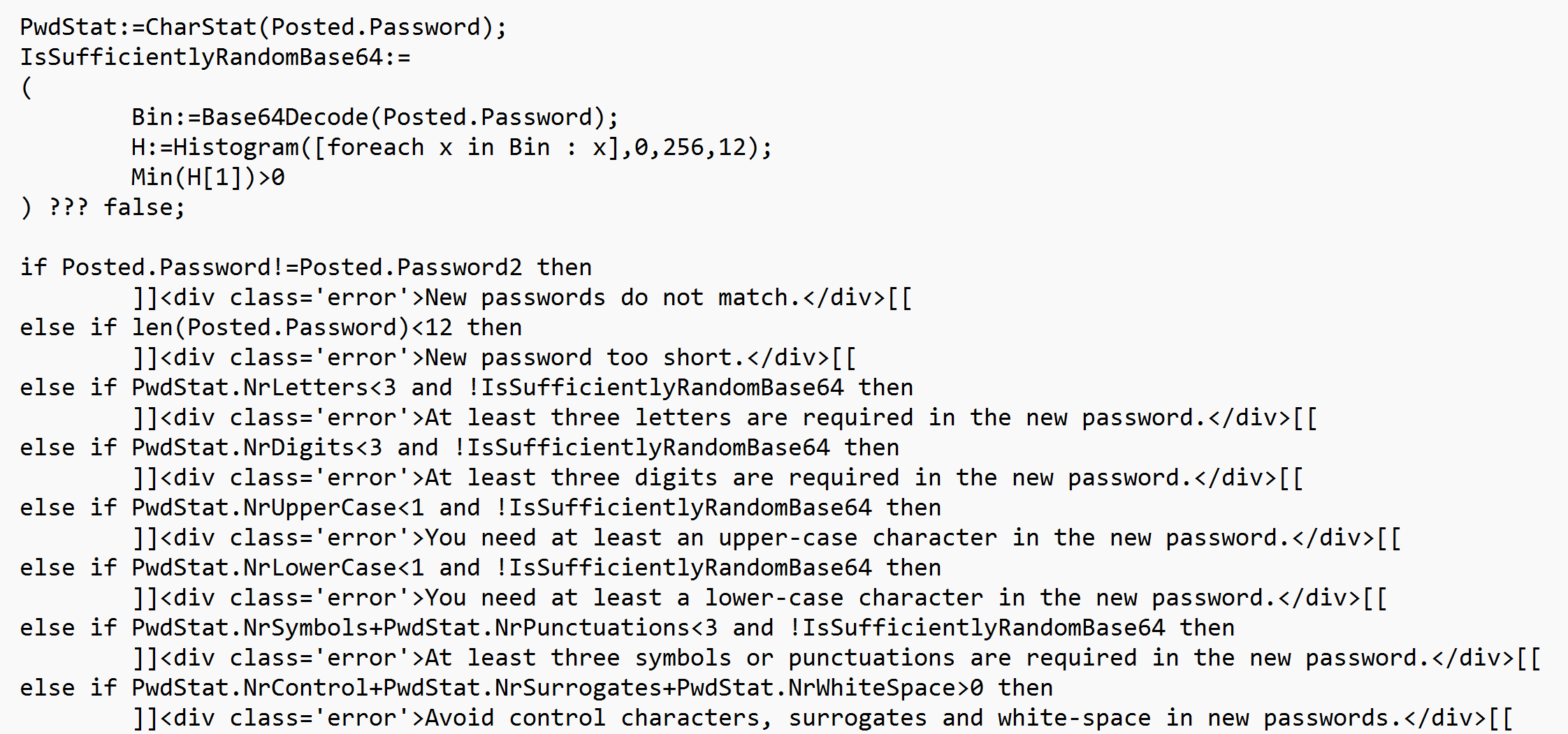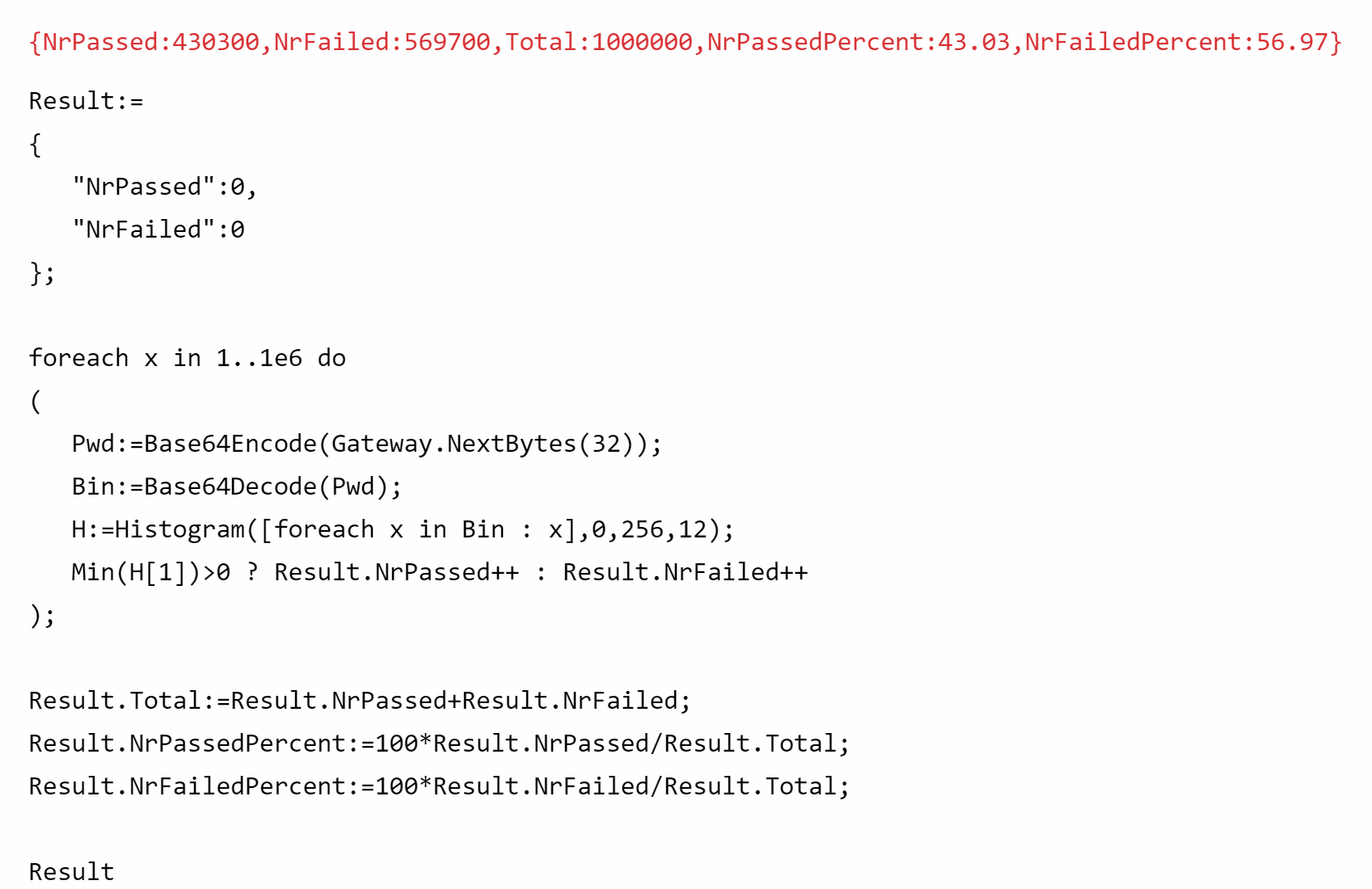On entropy in passwords
Entropy can be seen as a measurement of the amount of randomness or chaos that exists in something. When it relates to passwords, it can be sean as a measurement of how difficiult it is to guess (using brute force). As computers become more powerful, and access to processors that can perform a huge amount of computations rapidly increases, it becomes more and more important to protect passwords and user credentials. this article shows some ways to increase the entropy in credentials used (to improve security), and therefore make it more difficult for malicious actors to access your system and information without you knowing or consenting.
Password-less solutions (Quick-Login)
It is important to realize humans are very poor random number generators (i.e. they are often very predictable). So, to avoid letting humans choose a password at all, maybe the best option to create a more secure system. One way to do this, is to use a device with a digital identity app, that allows you to sign in to a service. The app generates credentials in a much more secure manner, and can manage the signing in for the user, with a security strength beyond what human users normally can achieve. One such solution, is to use the TAG ID together with the Quick-Login feature of the TAG Neuron®. Benefits from this kind of solution includes:
- Humans do not invent vulnerable passwords.
- The service does not need to create a separate users database, with all the complexities of managing credentials, etc. The service gets the necessary information directly from the app, during quick-login.
- You can use the same device/identity on multiple services on the federated Internet. This also means, different services can cooperate and interoperate, as the identity is the same.
- Apps can use more methods to authenticate a person, than a web-page can. This includes usage of finger-prints, facial recognition, access to NFC or Bluetooth devices, etc., such as e-Passports or e-IDs, and so on.
Differentiate between local and network passwords
Sometimes, it is necessary to create a humanly-generated password. Understanding that such do not have sufficient entropy for use over the Internet, they should be restricted for local use only. One way to use such humanly-generated local passwords is to protect information in a secure storage on the device, and never use it in any communication setting, even in hashed form. The secure storage can then be used to store a much more secure password that is randomly generated using a cryptographic number generator, by the application itself. Once such a generated password can be securely stored and retrieved using the local password, it can be used for network communication purposes. The local password might be sufficiently strong to evade breach by a dedicated human local user, but not sufficiently strong to evade breach by dedicated malicious users on the Internet, especially if there are a lot of users using the same communication interfaces.
Encrease entropy in humanly created passwords
If you still need to provide human users with the ability to generate passwords and use them on the Internet, perhaps because of business, technology or knowledge boundaries, you must try to limit the possibilities of generating passwords that are too weak. One way to do this, is to enforce passwords to be of a certain length. But that is not sufficient, as a user who has chosen the password 123456 before, and is now forced to use 10 characters, would probably just use the password 1234567890. such a password would not be more secure, even if it’s longer. Another way to do this, is to count the number of occurrences of different character classes in the password, and force users to select passwords using characters from different classes. While this is annoying for the user, it increases the entropy of the passwords somewhat.
The following script example shows how to compute the number of occurrences of different character classes in a password, by using the .NET Char class, and its static methods to check individual characters in a string. (The code here assumes a character can belong to multiple classes.)

Check for randomness in computer-generated passwords
If a computer generates a password on the other hand, it will be a binary string, not necessarily representable by characters in a humanly-readable way. To solve this, random passwords are typically encoded using a limited alphabet, such as BASE64. Such passwords would be longer, have more entropy than a humanly generated password, but would fail a test based on character classes, as it would not use characters from a sufficient number of character classes. So a separate test of entropy needs to be performed on such passwords.
Assuming the password will be BASE64 encoded, the first step would be to decode the password into a binary string. Testing for entropy and randomness is a large field of study in itself, but we can perform a simple test on a proposed password, to check it is sufficiently random: We can create a histogram of the byte values in the password, and check that all buckets in the the result contain at least one value. This way, we know the bytes are distributed over the entire range of byte values, and a brute force-attacker must test for all possible values, greatly increasing the security strength of the solution. While this test does not catch passwords such as 0, 1, 2, 3, 4, 5, …, 255 (which has very little entropy), an app that generates such an insecure password is most probably developed to be wilfully insecure. And if the user (or developer) is wilfully insecure, they will be able to create an insecure password that passes any entropy test (as long as they know the methods to test the password).
Note: When performing a test using a histogram, the number of buckets to be used in the test is an important factor. For passwords based on 32 random bytes, 12 buckets will check for uniform distribution, and remove about half of generated passwords (see below). This means that accepted passwords would generate a security strength of 256-1=255, which is sufficently high, as other parts of the communication framework in a “normal” setting probably has security strengths ranging from 128 and up. (Note: security strengths are exponents of 2, so a security strength of 256 means a brute force attacker would require 2256 attempts to break a password. If half of passwords are removed, they need approximately 2256/2=2256-1=2255 attempts, i.e. the security strength is 255.)
The following script shows how such a randomness check could be implemented. (Here, the ??? operator is a short form of the traditional TRY ... CATCH ... operator. So if any of the function calls fail, the result will be false.

Login auditor
While the above checks limit the use of unsecure passwords somewhat, malicious users (and robots made by malicious users) will still attempt to access the system continuiously, hoping to find a breach, at some point in time, on some server, for some user. Robots have patience, especially if funded by determined actors. The TAG Neuron® therefore also includes a Login Auditor, that if used monitors login attempts, and can block perceived malicious use, first temporarily, then permanently. Permanently blocked endpoints are furthermore logged in the Neuro-Ledger™, and distributed between Neurons, so that all neurons can benefit from knowing what endpoints to refuse. The auditor monitors these login-attempts, via logged events. It is therefore important to log successful and failed login attempts properly, so the login auditor can analyze them. Apart from distributing the results of blocks to other Neurons via the Neuro-Ledger™, different services running on the same Neuron®, or using different protocols, benefit from sharing this information. If you use the .NET framework for logging in a user in a Neuron®, such logging is performed automatically. All you need to do, is to check if there exists a temporary or permanent block, and present this information to the user, so they know when they can try again.
Tying it together
Let’s tie the above together, in an example that is implemented in a Markdown page on a TAG Neuron®. The page allows the currently logged in user to change its password. The user has just performed a POST to the page, the POST containing a JSON object, with three fields: CurrentPassword, Password and Password2. The contents has been provided to the page, which is currently being generated for the user, with the response. The processing of the request is embedded in script on the page itself. Using the function defined above, the first step is to check for randomness in the proposed password (and that the repeated password is equal to the first proposed password):

If the initial checks pass, we then continue to perform an actual login attempt, using the credentials provided. This login-procedure will check for blocks, and also appropriately log the attempt for the login auditor to analyze. The code then checks the results from the login attempt and presents the user with information what has been done. If successful, the password is changed. Information about the user is stored in an encypted database, but still, passwords are hashed, to avoid passwords from leaking by mismanagement of the contents of the database. Clearing any caches is also important, to make sure any cached user objects in any service are not used, and the new updated version is used instead.

Reduction of security strength due to distribution check
As explained above, by refusing a number of randomly generated password, you reduce the security strength of the solution, as you reduce the number of available options of passwords. Empirically, we can easily measure how many passwords are removed using the parameters outlined above (i.e. using a 32-byte random password, and a historgram using 12 buckets to check for distribution). The test comes down to approximately 43% of generated passwords pass, and 57% of passwords are rejected, reducing the security strength from 32*8=256 to 255.
